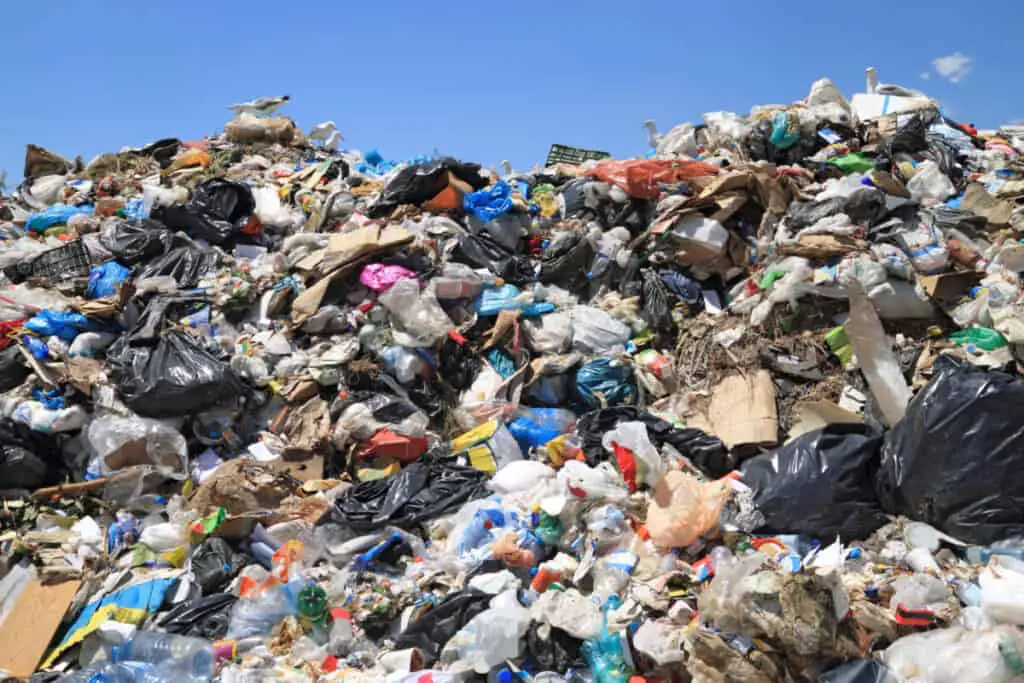
Living in this world today can bring questions about what to do with our waste. Since it’s hard to come up with perfect solutions to act on to protect the Earth’s environment, sometimes it’s a choice of what will work better than the other option. Burning and burying trash both have advantages and disadvantages of course, but burning trash helps the Earth a bit more.
Burning trash is better than burying trash because it’s efficient in eliminating waste and creating energy that can be used from the gas. This is better for the environment than burying trash because it doesn’t sit in a landfill for years, which is a leading cause of global warming today.
There are various factors that conclude what makes burning or burying your trash positive or negative for the planet. Below explains all the core elements to determine why burning trash is better than burying it.
What Does Burning Trash Look Like?
When talking about burning trash, this is referred to as “incineration.” Incineration is a thermal waste treatment technique where hazardous materials are burned in a combustion chamber. This happens in what’s called an “incinerator,” “Incineration plant,” or “waste to energy plant.”
Basically, waste is put into the combustion chamber and then heated to a very high temperature for a period of time, depending on the type of waste. While it’s heating up, the contaminates change to gas and are destroyed or go through a secondary heating process. (Source)
The purpose is to eliminate waste.
What Happens to Buried Trash?
Trash that’s thrown out or doesn’t make the recycling goes to landfills. At landfills, there is a layer of clay on the ground with a skin of about one inch of flexible plastic. This allows drains and pipes to collect the contaminated liquid that leaks through the trash. When it’s filled, there’s another layer of clay and plastic that covers it.
The purpose is to store waste, not necessarily to break it down. The trash decomposes, but very slowly. (Source)
Why Burning Trash is Better
There are both ups and downs to burning and burying trash. It’s difficult to say that just one should be used and doesn’t have its own flaws, but burning trash seems to have less detrimental effects on our environment than burying it.
The best part about incineration is that it avoids the harmful aspects of landfills like toxic chemicals leaking into groundwater and the release of methane. Reducing the release of methane minimizes global warming effects.
Aside from its ability to get rid of so much waste, the burning of waste can be transmitted into fuel. The gas is used for energy and the ash is converted into aggregates that are used for construction projects or road surfacing. (Source)
When it comes to landfills, there are certain positives as well.
Here we can compare the advantages of burning trash versus burying trash:
| Burning Trash | Burying Trash |
| Reduces the amount of waste | It’s a cheap method |
| Stops waste from going to the landfills | If the right technology is used, the harm it does to the environment can be avoided |
| Incinerators can safely be near cities which reduces transportation costs | Keeps populated areas clean |
| Reduces global warming effects because there is no methane | Provides jobs and business opportunities |
| Gases from incineration can be used as energy or aggregates | Possibility to use landfills as an energy source by controlling the methane |
Concerns With Burning Trash

A concern with burning trash that researchers have stated is that incineration makes people less likely to recycle. The UKWIN researched this, and their data shows that a lot of the waste that enters incinerators is recyclable items or food that can be composted. (Source)
A large amount of our waste can be referred to as resources, and when it’s burned, it’s completely gone. For example, Europe has really implemented these incinerators. In 2013, Germany would incinerate 37% of its waste, and recycled 45%. Denmark, Norway, and Sweden on the other hand were incinerating 50% of their waste. While they still had exceptional recycling rates, the concern rose that if incineration wasn’t happening so much, the recycling rates would be higher. (Source)
Since then, many countries have made efforts to shift their focus to people recycling and composting.
The overall considerations about burning trash, is making sure it doesn’t stop people from recycling, composting, and essentially saving resources.
Concerns with Burying Trash
Landfills are full of waste that is harmful to the Earth’s soil and many materials can take hundreds of years to break down and decompose. It’s easy for hazardous or toxic materials to be inside landfills, which can pollute the soil, water, and air.
One of the biggest concerns regarding landfills is the methane it releases. According to the United States Environmental Protection Agency, “landfills are the third-largest source of human-related methane emissions in the United States, accounting for approximately 14.5 percent of these emissions in 2020.” They also said that methane emissions from landfills in the year 2020 was equal to the greenhouse gas emissions from roughly 20.3 million passenger vehicles driven.
Why is Methane a Problem?
Why this is so concerning, is because methane is very harmful to our environment. It’s actually the main cause of the formation of ground-level ozone, which is a hazardous air pollutant and greenhouse gas. Exposure to this leads to 1 million premature deaths a year. (Source)
Methane causes significant effects through pollution and is a huge contributing factor to global warming.
Here we can compare the disadvantages of burning trash versus burying trash:
| Burning Trash | Burying Trash |
| The whole process of constructing and running incinerators is expensive | Requires a large area to be used for landfills |
| If the gases produced escape into the atmosphere it’s dangerous | Waste breaks down very slowly and the area can’t be used for a long time |
| There have been reports of different health conditions like cancer, birth defects, respiratory diseases, etc. from people living near incineration plants. | If not done properly, waste can leak toxic chemicals into soil and water. |
| There are long-term effects on the environment | Accumulating bacteria-laden medical waste can increase the spread of antibiotic-resistant bacteria that can be inhaled easily by humans and animals |
| Can potentially reduce using other safe waste managing actions like recycling | Carbon and methane from landfills are a big factor in causing global warming |
Related Topics:
If you like the article above, here are some other similar articles you should check out!
What Do Garbage Trucks Do with Trash?
